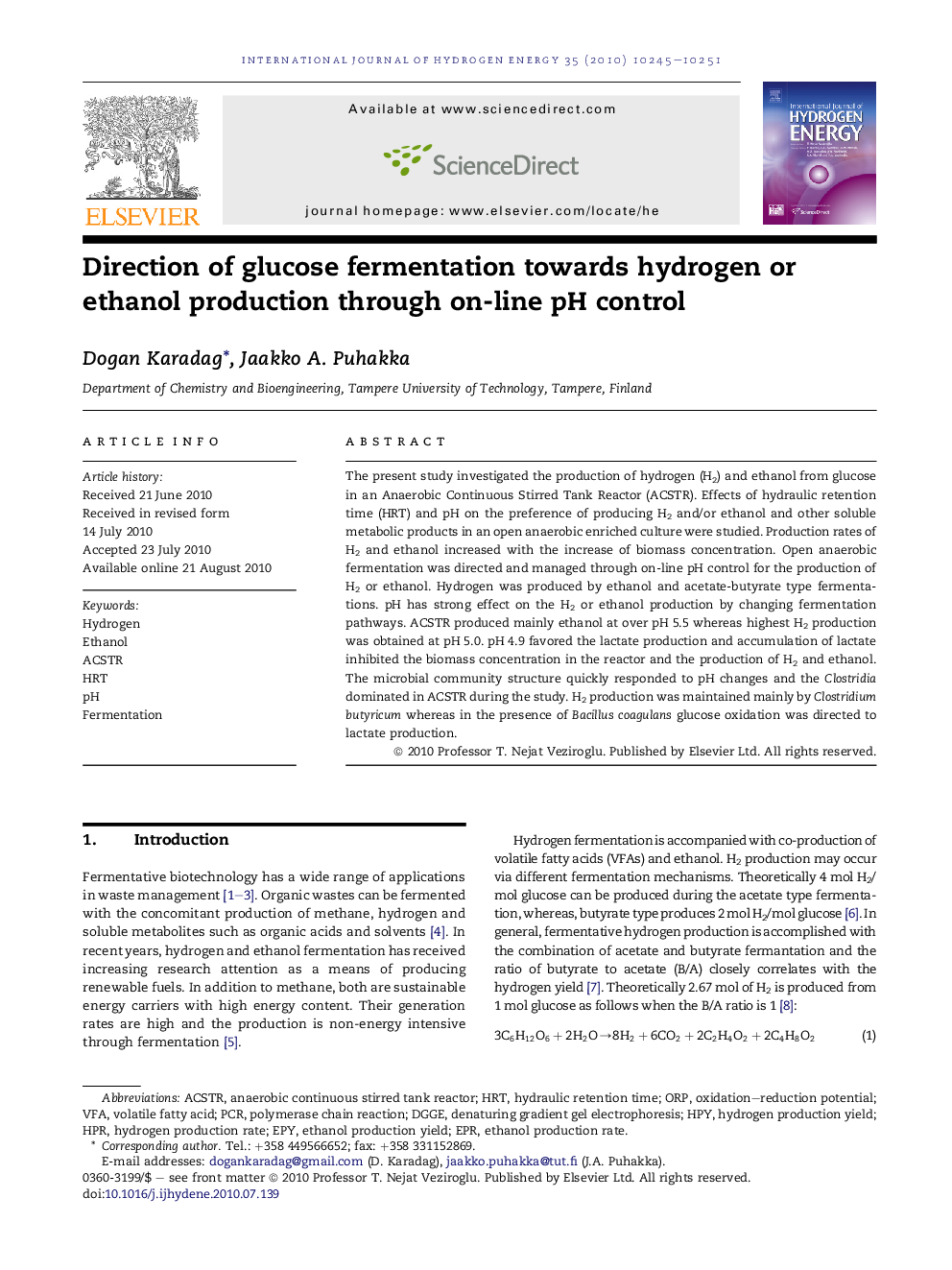| Article ID | Journal | Published Year | Pages | File Type |
|---|---|---|---|---|
| 1280078 | International Journal of Hydrogen Energy | 2010 | 7 Pages |
The present study investigated the production of hydrogen (H2) and ethanol from glucose in an Anaerobic Continuous Stirred Tank Reactor (ACSTR). Effects of hydraulic retention time (HRT) and pH on the preference of producing H2 and/or ethanol and other soluble metabolic products in an open anaerobic enriched culture were studied. Production rates of H2 and ethanol increased with the increase of biomass concentration. Open anaerobic fermentation was directed and managed through on-line pH control for the production of H2 or ethanol. Hydrogen was produced by ethanol and acetate-butyrate type fermentations. pH has strong effect on the H2 or ethanol production by changing fermentation pathways. ACSTR produced mainly ethanol at over pH 5.5 whereas highest H2 production was obtained at pH 5.0. pH 4.9 favored the lactate production and accumulation of lactate inhibited the biomass concentration in the reactor and the production of H2 and ethanol. The microbial community structure quickly responded to pH changes and the Clostridia dominated in ACSTR during the study. H2 production was maintained mainly by Clostridium butyricum whereas in the presence of Bacillus coagulans glucose oxidation was directed to lactate production.
